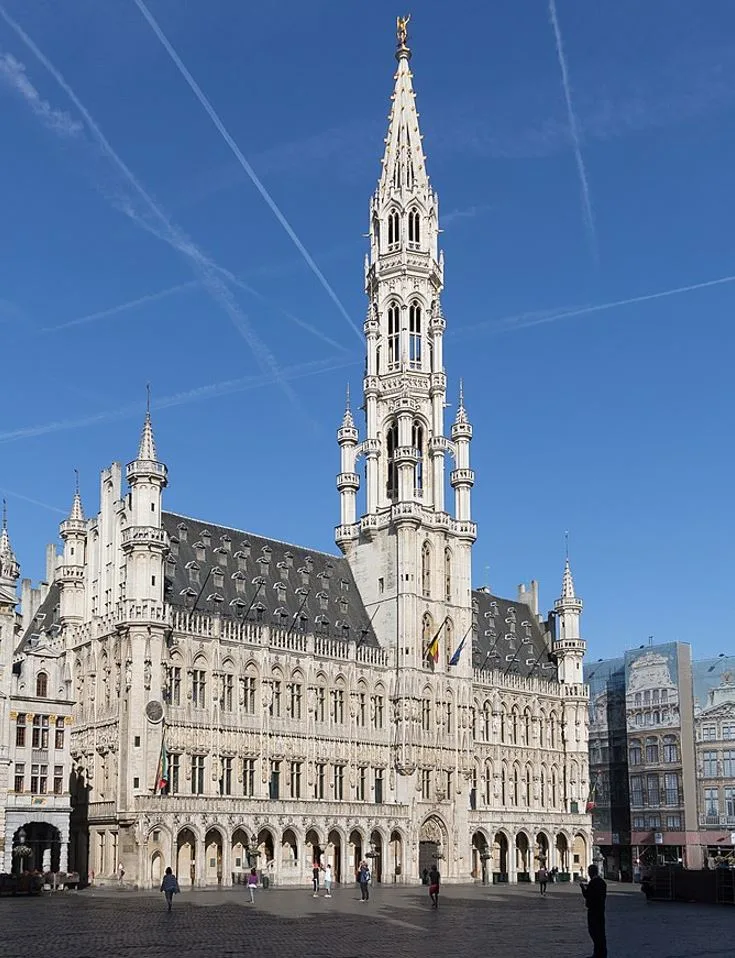When it comes to Gothic architecture, you probably think about the famous Gothic cathedrals constructed all around Europe during the Middle Ages.
There were, however, many other types of structures built in this amazing architectural style between the 12th and 16th centuries.
Gothic buildings evolved from Romanesque buildings and incorporated some unique features.
Rounded arches and windows became pointy and new structural developments allowed buildings to become much higher.
Rib vaults and flying buttresses were key elements to support the spires that reached toward the heavens above.
So what were some of the most famous Gothic buildings ever constructed? In this article, you’ll find out.
1. Leuven Town Hall – Leuven, Belgium
Leuven Town Hall is the city hall of this relatively small city just east of Brussels in Belgium. It’s located at the Grote Markt, the main market square in the city, and is a prime example of the magnificent Brabantine Late Gothic style that was popular in the low countries in the 15th century.
This amazing city hall was constructed between 1448 and 1469 and was originally part of a much larger complex of civic buildings. This highly decorative architectural style of this structure makes it one of the most beautiful buildings in Belgium.
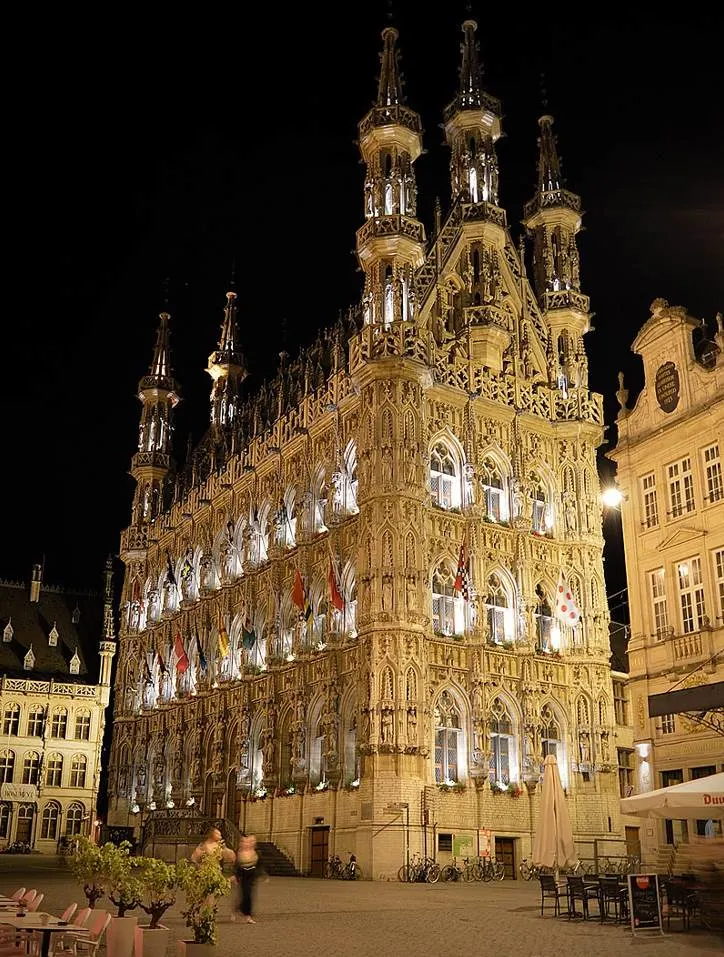
2. Palais des Papes – Avignon, France
The Palais des Papes or the “Palace of the Popes” is a historic palace in the city of Avignon in Southern France. It’s an enormous medieval structure that once served as the official residence of the Pope and the seat of Christianity in the 14th century.

This immense palace has a total floor area of 15,000 square meters (160,000 square feet) which made it the largest Gothic building that was ever constructed in Europe. The building was constructed in such a way that it could withstand extended sieges, so thick walls and supportive elements were heavily used.
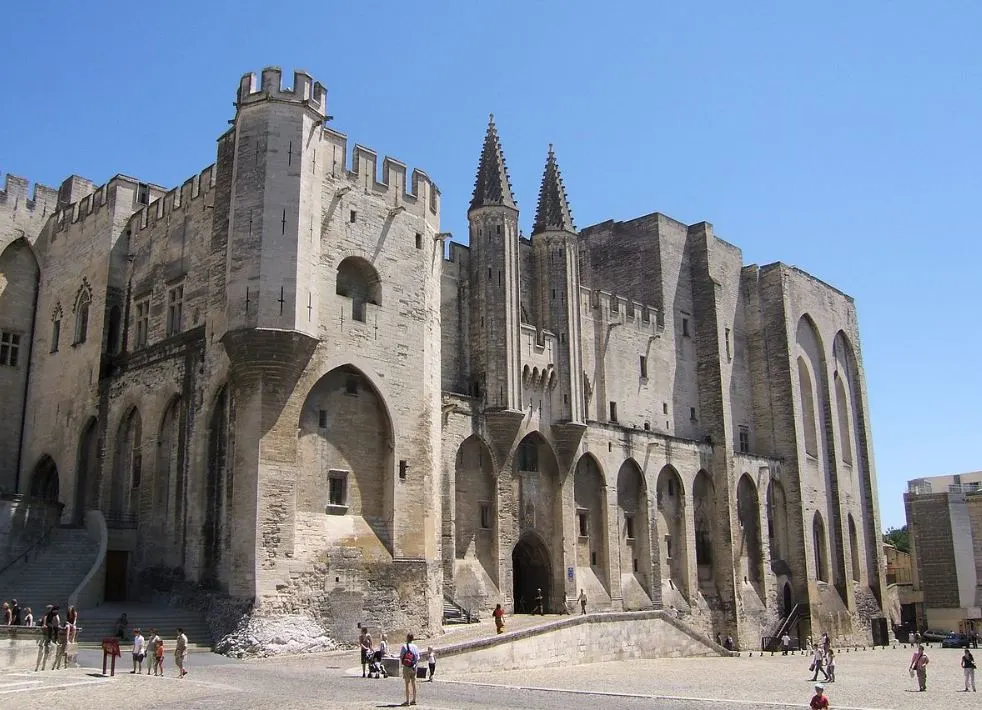
3. Conciergerie – Paris, France
The Conciergerie is one of the most significant historic buildings in Paris as it served as both a courthouse and prison. It’s here that many important prisoners were held during the French Revolution. This includes Marie Antoinette who was transported to her place of execution from here.
This famous Gothic building was originally part of a much larger palace complex known as the Palais de la Cité. This served as the residence of the Kings of France between the 6th and 14th centuries. The Hall of the Men-at-Arms inside the building is the largest non-religious Gothic hall in Europe.
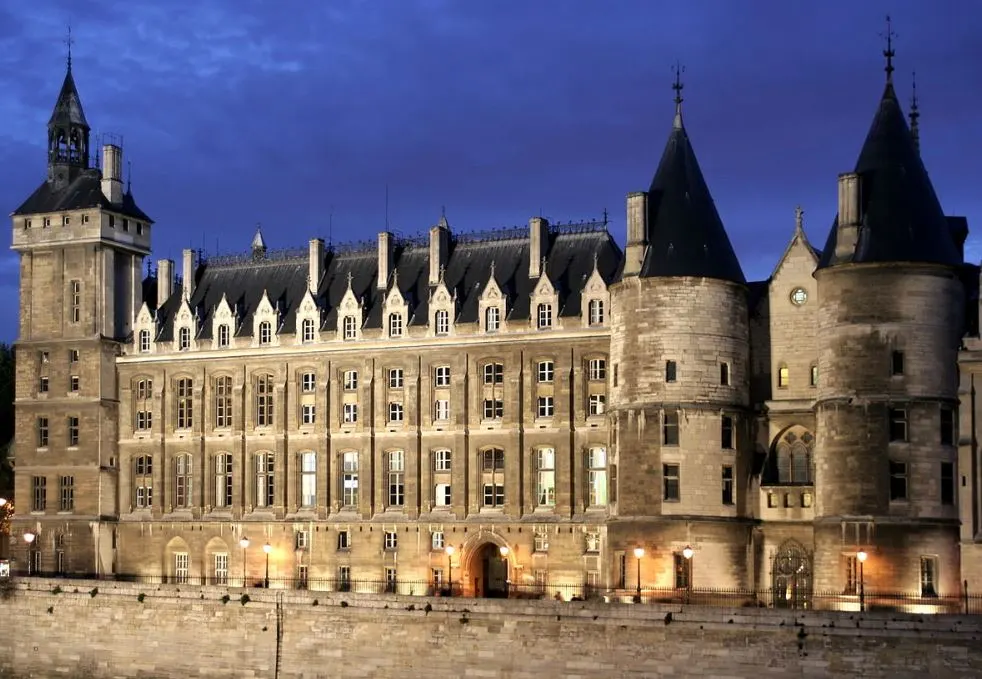
4. Belfry of Bruges – Bruges, Belgium
The Belfry of Bruges is one of the most amazing landmarks in Bruges, a medieval city in the western part of Belgium. Bruges was one of the most important port cities in Europe during the Middle Ages and this reflects in the incredible buildings that were built here, including this famous bell tower.
The original version of this tower was completed in 1240 but it had to be rebuilt because of a fire in 1280. The octagonal upper section of the tower was completed later between 1483 and 1487. It was originally topped with a Gothic-style spire but this was also destroyed by fire in the 18th century and never rebuilt.

5. Ypres Cloth Hall – Ypres, Belgium
The Ypres Cloth Hall is another famous building in a city in Belgium that was thriving during the Middle Ages. Ypres is located in the western corner of Belgium and was a center of the cloth industry between the 12th and 14th centuries. That’s why this commercial building was constructed.
It was completed in 1304 and was one of the largest commercial buildings in Europe at the time. It features a stunning Gothic belfry in the center which emphasized the city’s wealth. Unfortunately, the cloth hall was destroyed during World War I but completely rebuilt during the 20th century.
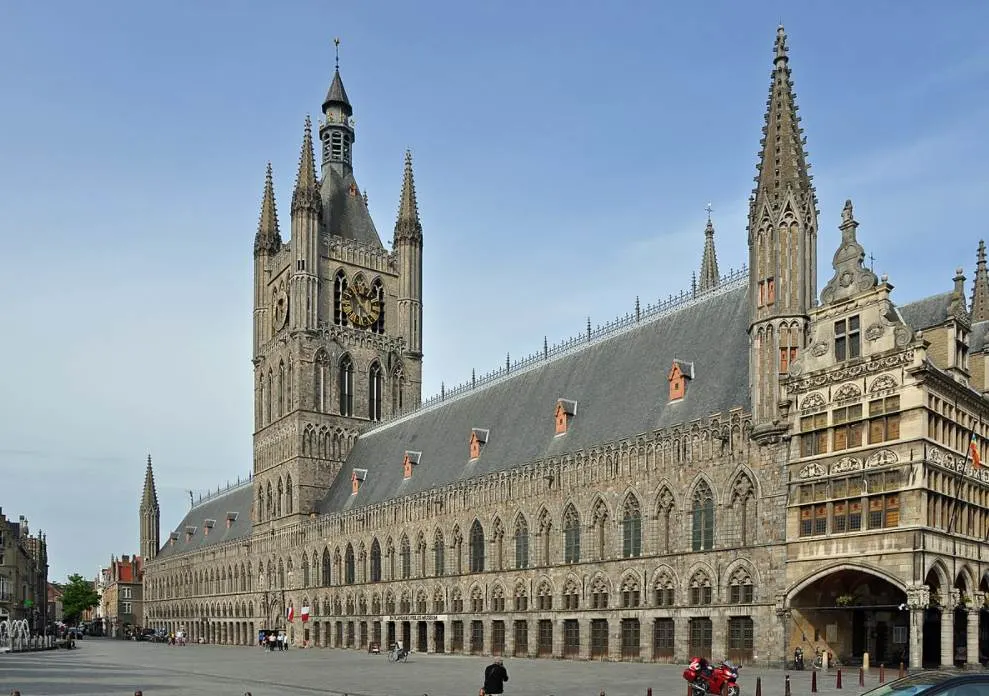
6. Middelburg Town Hall – Middelburg, Netherlands
The Middelburg Town Hall is another great example of Gothic architecture in the Low Countries. It’s located at the main square in the Dutch city of Middelburg, the capital of the Zeeland Province in the utmost southwestern part of the country.
The building was completed in 1520 and just like the Leuven Town Hall, features an incredible amount of decorative elements. This structure was heavily bombed during World War II and the interior was destroyed. Remarkably, the exterior remained intact and was preserved during restoration projects.
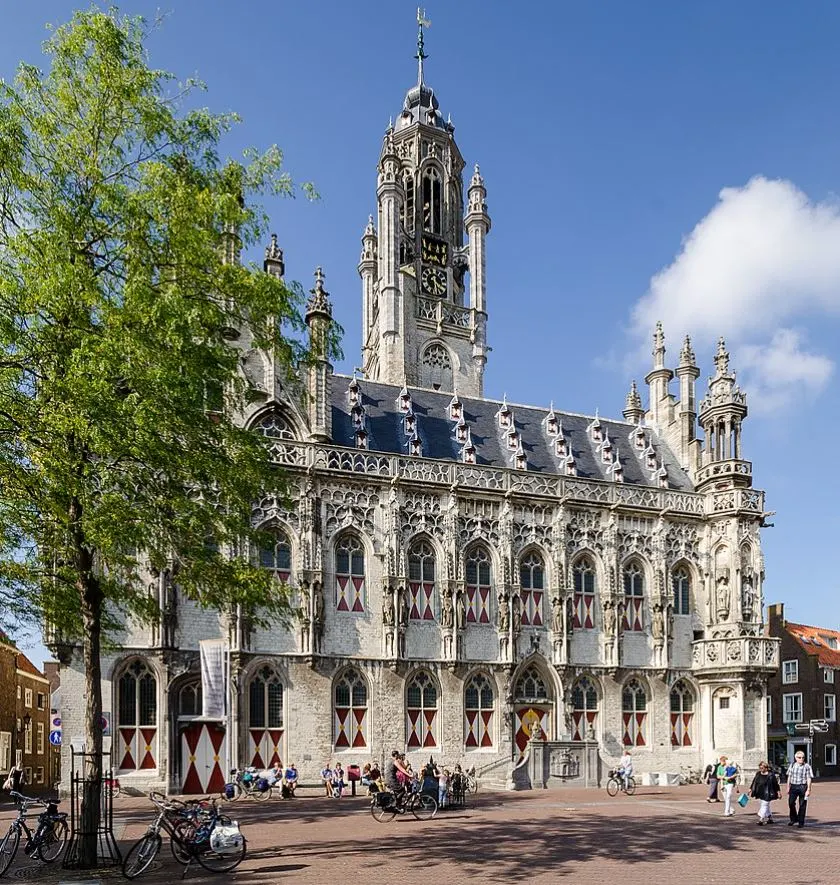
7. Mir Castle – Mir, Belarus
Mir Castle is a historical castle in Europe that is located in the town with the same name in the western part of Belarus. This just shows how widespread the architectural movement was during the Middle Ages, although the design incorporates a local version of Gothic architecture.
It was completed in the 16th century which means it’s one of the late-Gothic buildings that used brick as the main material. This was a time when this region was part of the Polish–Lithuanian Commonwealth. It was inscribed as a UNESCO World Heritage site in 2000 because of its historic significance.
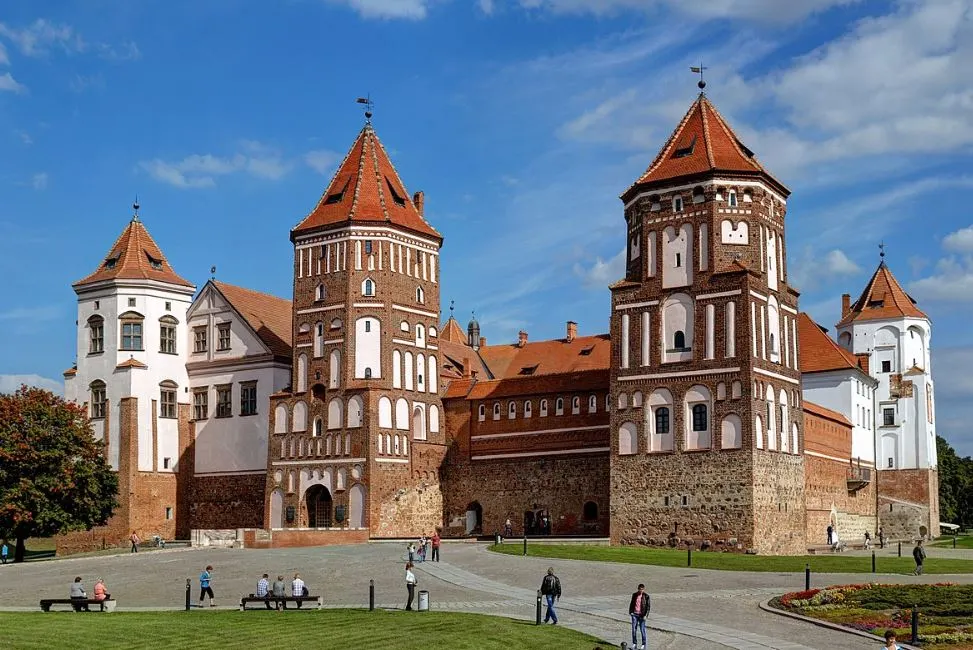
8. King’s College Chapel – Cambridge, England
King’s College Chapel is the main chapel of King’s College at the University of Cambridge. This university city is located in Cambridgeshire in the East of England and is home to a large number of historic buildings, including this remarkable Gothic chapel that was completed between 1446 and 1515.
This building is quite long at 88 meters (289 feet) and is home to the longest fan vault in the world. The style of the chapel is a prime example of the late Perpendicular Gothic style, the final style of Gothic architecture in England. The stained glass windows of the chapel were completed in 1531.
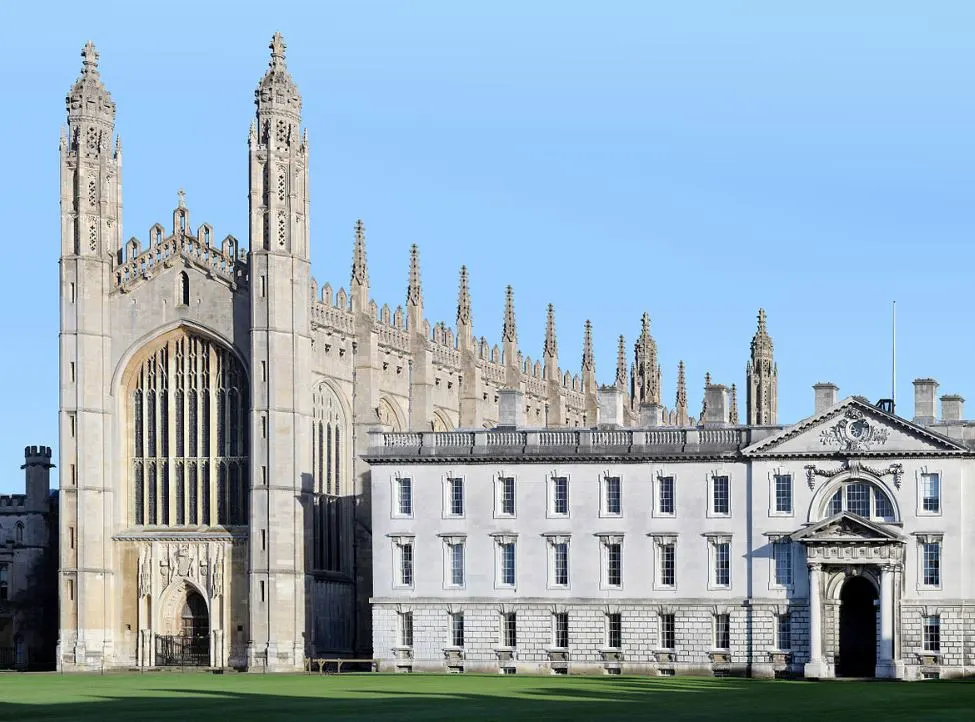
9. Doge’s Palace – Venice, Italy
The Doge’s Palace is one of the most important buildings in Venice. It served as the seat of the Doge, the ruler of the Republic of Venice, and was originally completed in 1340. It’s a great example of Venetian Gothic architecture, the local version of the Italian Gothic style.
It’s a fascinating variant of Gothic architecture because it incorporates elements of Byzantine architecture and Islamic architecture as well. This has to do with the strong trading culture that existed in the Republic of Venice throughout the Middle Ages and beyond.

10. Brussels Town Hall – Brussels, Belgium
Brussels Town Hall is a stunning building in Brussels, the capital city of Belgium. It’s the only medieval building that still faces the Grand Place in the heart of the city. That’s quite remarkable because this large structure is the only one that survived the bombardment of Brussels by the French in 1695.
This incredible city hall was constructed between 1401 and 1455 and is a masterpiece of Brabantine Gothic architecture. Its distinctive spire reaches a height of 96 meters (315 feet) and is topped by a large statue of Saint Michael, the patron saint of Brussels, who is slaying a dragon.
